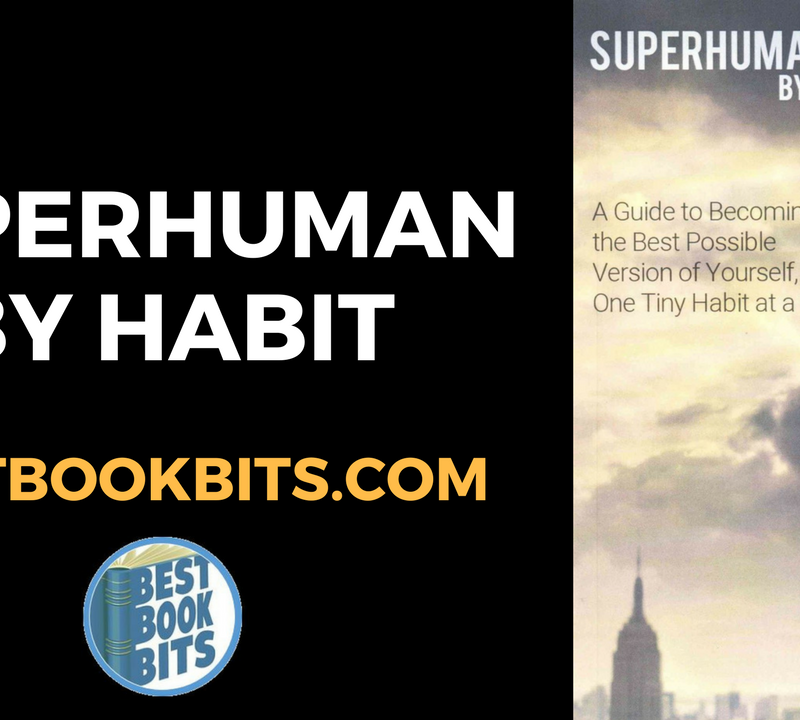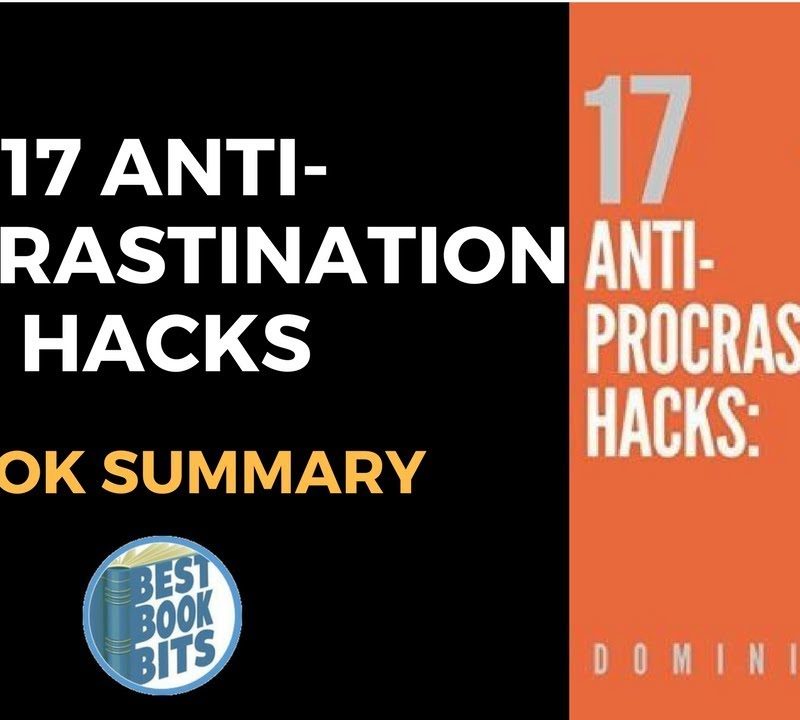★DOWNLOAD THIS FREE PDF SUMMARY HERE https://go.bestbookbits.com/freepdf
? MY FREE BOOK TO LIVING YOUR DREAM LIFE” https://go.bestbookbits.com/first-seven-steps
? SPONSOR BESTBOOKBITS BY USING PATREON https://www.patreon.com/bestbookbits
? SUPPORT BESTBOOKBITS BY CLICKING THE LINKS BELOW
150 PDF Summaries: https://go.bestbookbits.com/150
Coaching Program: https://go.bestbookbits.com/coaching
Subscribe to My Channel: https://www.youtube.com/bestbookbits?sub_confirmation=1
Website: https://bestbookbits.com
Instagram: https://www.instagram.com/bestbookbits
Spotify: https://open.spotify.com/show/0q8OW3dNrLISzyRSEovTBy
Facebook: https://www.facebook.com/michaelbestbookbits
Book Club: https://bestbookbits.com/bookclub/
Mailing List: https://mailchi.mp/d1dfc1907cdb/bestbookbits
“The goal of a mini-habit is to be consistent. In fact, consistency is much more important than what you accomplish with this daily habit.”
The Mini-Habit
The idea behind mini habits is that you can get to a larger habit if you start small, create simple goals, and aim for consistency.
In his book Mini Habits: Small Habits, Bigger Results, Stephen Guise gives the example of “The One Pushup Challenge.”
He was doing what a lot of us do. Feeling guilty about not working out, he tried to fit years worth of exercise into the first workout which created an all or nothing attitude (not to mention a focus on goals and not process.) Well, one day he decided to do the opposite. He did only one pushup.
This allowed him to check the box that he did his activity. Only he didn’t stop at one, he did 14 more. Then he did one pull-up and guess what? He didn’t stop at one. His workout went on like this and when he was done it was a pretty decent effort. It started with one pushup.
In Habit Stacking: 97 Small Life Changes That Take Five Minutes or Less, author S. J. Scott writes:
The core idea behind the mini-habits concept is that you can build a major habit by thinking small enough to get started. Most people don’t need motivation to do one pushup, so it’s easy to get started. And once you get going, you’ll find it’s easy to keep at it.
Habit-Stacking
The purpose of habit-stacking is to create simple and repeatable routines (managed by a checklist). The goal is to get this out of the cognitive load, “because all you have to remember to do is follow the checklist,” and not each individual habit. You do this by doing the same set of actions in the same order and way each day. Checklists, do more than simply tell you what you need to do next, they help you deal with complexity and increase productivity.
“Linking habits together is a way of getting more done in less time, resulting in a positive change in your life. As you perform the stacked actions every day, they become part of your daily routine.”
According to Scott there are 8 Elements of a habit-stacking routine.
- Each habit takes less than five minutes to complete.
- It’s a complete habit.
- It improves your life.
- It’s simple to complete.
- The entire routine takes less than 30 minutes.
- It follows a logical process.
- It follows a checklist.
- It fits your life.
17 Small Productivity Habits
All of these habits are from Scott’s Habit Stacking: 97 Small Life Changes That Take Five Minutes or Less.
I don’t agree with all of them; Most of these seem like common sense.
Scott argues that if you add them to a routine, “you’ll see a dramatic improvement in both the quantity and the quality of your efforts.” I think a lot of that improvement will be from simply bringing awareness to how you spend your time and what you’re doing.
#1 Drink a Large Glass of Water
Even mild dehydration can cause headaches and fatigue, affect your concentration, impair short-term memory and impede mental function. If you want to be at your most productive , it’s important for your brain to be firing on all cylinders. Therefore, you should make sure you are sufficiently hydrated before starting work.
#2. Schedule Your Day and Prioritize Your Tasks
Without at least a basic schedule, it’s frighteningly easy to get to the end of the day and realize you’ve achieved nothing of importance. At the very least, you should make a list of the tasks you want to accomplish during the day and decide where your priorities lie.
#3. Focus on Your Three Most Important Tasks
Another way to plan out your day is to focus on your Most Important Tasks (MITs). With a daily schedule, it’s easy to try to do too much. Then, when you get to the end of the day and haven’t completed everything, you feel like a failure. Picking your MITs each day gives you something to focus on so you don’t waste your day on tasks of low importance. If you manage to complete your MITs, you’ll feel productive— even if you do nothing else on your list.
#4. Turn Tasks into Manageable Steps
For each task on your schedule, consider how it can be broken down into smaller steps.
#5. Create Accountability by Telling Others
If your tasks don’t have accountability built into them (like a client deadline), creating accountability by letting others know your intentions is a great way to discipline yourself into staying on task. You won’t want to embarrass yourself by admitting you didn’t get any work done, so you’re much more likely to achieve your goals if you make them public.
#6. Reward Yourself for Task Completion
To keep your energy up and motivation high, alternate your work tasks with small treats. These treats not only act as a break to replenish depleted levels of concentration, but also work like a carrot on a stick— you’ll work faster and with more enthusiasm when you have something to look forward to at the end of it.
#7. Remove Distractions Before Working
Rather than struggling against your brain’s natural inclination to procrastinate, save yourself a lot of time and hassle by simply closing your email tab and banning social media during work time.
#8. Clear Your Desktop
Clear all paperwork off your desk except what you will need that day. Put everything else into physical folders, file boxes and drawers— out of sight, out of mind.
#9. Play Music or White Noise to Improve Focus
Low-level background noise helps muffle any distracting sounds that could interrupt your work and has been shown to improve creativity and focus for many people.
#10. Do the Hardest (or Most Unappealing) Task First
Look at your list of MITs (Most Important Tasks) and underline the one that you know you’d put off indefinitely if you had the chance. Get started on this task before you have a chance to think about it. Don’t work on your other tasks until it’s finished.
#11. Commit to a Very Small Goal
Look at your hardest task and plan a small, easy first step to completing it that will take only a few minutes. Pick a simple metric that you know (without a doubt) you can complete.
#12. Work in Small Blocks of Time
The Pomodoro technique is probably the most well-known version of this technique. It involves working for twenty-five minutes and then taking a five-minute break.
#13. Track Time for Different Activities
Most people overestimate the amount of time they spend doing actual work and spend a surprisingly large amount of time doing mindless tasks. By tracking your time, you become more aware of how you’re spending it, and you can start to spot patterns in your schedule that are reducing your productivity.
#14. Use the Two-Minute Rule
If a task will take you two minutes or less to do, deal with it immediately and move on.
Keep in mind that this type of framework is how the urgent trumps the meaningful.
#15. Capture Every Idea
Our minds tend to wander. Despite our intentions they drift off from the task at hand. Rather than a drawback this is one of the fascinating ways that we gain insights. Pull out a notepad and write them down. You can come back to them later and, who knows, it just might be a great idea or the solution to a problem you’ve been working on.
#16. Write a Done List
Most people are familiar with to-do lists, but these lists can easily make you feel overwhelmed and demotivated if you try to plan too much. A done list has the opposite effect. By writing down everything you achieve each day, you’ll feel motivated to continue.
#17. Review Your Goals
Everybody has goals. Whether they are big or small, we all have things that we want to accomplish. Sadly, the daily hustle and bustle of life can make us get off track. You need to review your goals so that you can create plans to reach those goals, put your day in perspective and know what’s important to accomplish.
★DOWNLOAD THIS FREE PDF SUMMARY HERE https://go.bestbookbits.com/freepdf
? MY FREE BOOK TO LIVING YOUR DREAM LIFE” https://go.bestbookbits.com/first-seven-steps
? SPONSOR BESTBOOKBITS BY USING PATREON https://www.patreon.com/bestbookbits
? SUPPORT BESTBOOKBITS BY CLICKING THE LINKS BELOW
150 PDF Summaries: https://go.bestbookbits.com/150
Coaching Program: https://go.bestbookbits.com/coaching
Subscribe to My Channel: https://www.youtube.com/bestbookbits?sub_confirmation=1
Website: https://bestbookbits.com
Instagram: https://www.instagram.com/bestbookbits
Spotify: https://open.spotify.com/show/0q8OW3dNrLISzyRSEovTBy
Facebook: https://www.facebook.com/michaelbestbookbits
Book Club: https://bestbookbits.com/bookclub/
Mailing List: https://mailchi.mp/d1dfc1907cdb/bestbookbits













